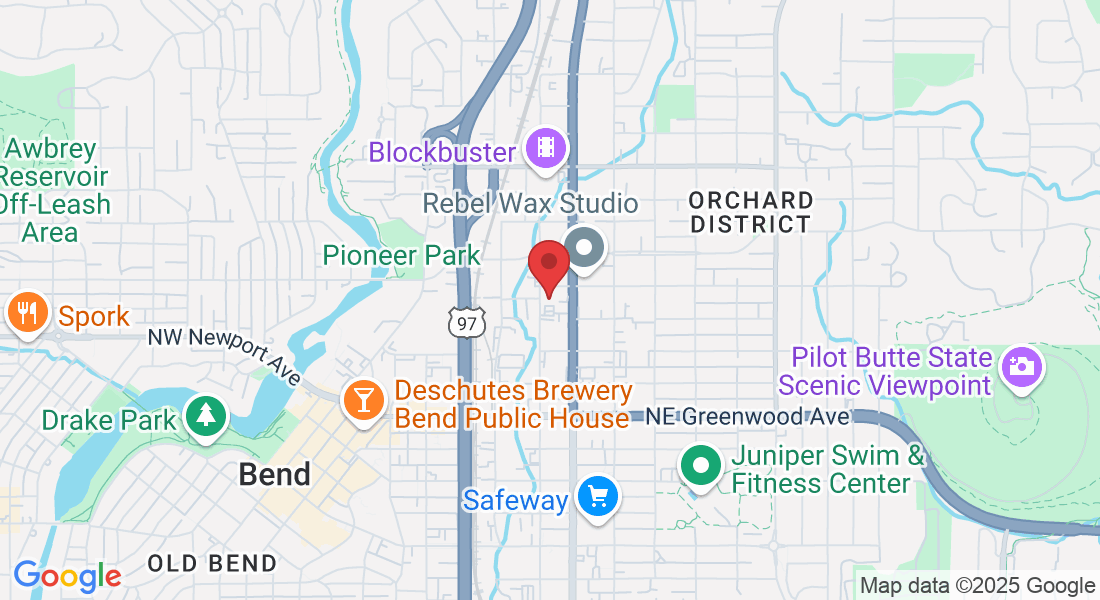Knee Pain Relief
Your Pathway to Knee Pain Relief
In the journey of life, knee pain can often emerge as an unwelcome companion, causing discomfort to people of various ages. From young athletes to active seniors, knee pain is a widespread issue that doesn't discriminate. It may be born out of a sudden injury, like a torn ligament or ruptured cartilage, or it could be the byproduct of a medical condition such as arthritis, gout, or even an infection.
Thankfully, minor knee pain often responds positively to strategies such as physical therapy, using knee braces, maintaining a healthy lifestyle, and can often provide significant relief. Here at PhysioFit, we understand that your journey to pain-free living is unique. We're here to provide customized, evidence-based treatments with a fitness-based approach to alleviate your knee pain effectively, helping you return to your everyday activities.
What You Should Know
Aging, injury, or recurring stress on the knee are the leading causes of knee pain.
Prevalent knee issues encompass sprains or strains in ligaments, cartilage tears, tendonitis, and arthritis.
A proper diagnosis of a knee problem involves a thorough evaluation from a professional or a medical examination, supplemented by diagnostic procedures such as MRIs, CT scans, X-rays, or arthroscopy.
Depending on the type and severity of the condition, both non-operative and surgical treatments are available to alleviate knee pain and problems.
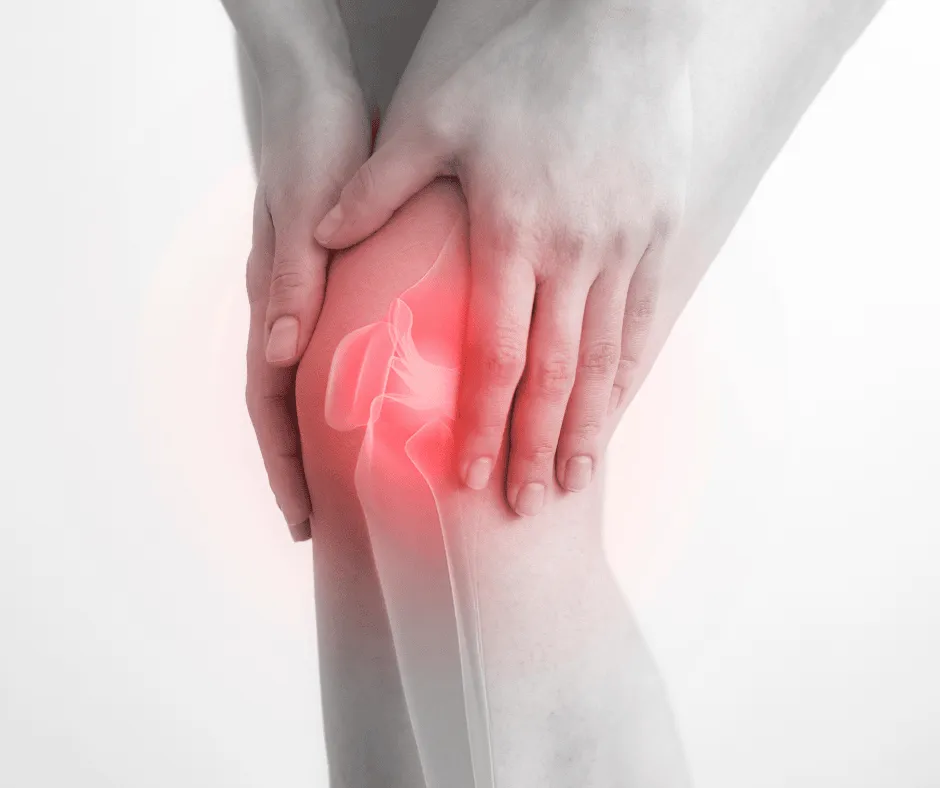
4 of the Most Common Knee Problems
The knee, a complex and integral joint in the human body, can be prone to several issues. These complications often result from natural aging, consistent stress on the knee joint, or an injury. Let's discuss four of the most common knee problems:
Strained or Sprained Knee Ligaments and Muscles: Often the result of a sudden blow or twist to the knee, strains or sprains affect the ligaments and muscles in your knee. The typical symptoms include pain, swelling, and difficulty in walking.
Torn Cartilage: Our knees consist of menisci, which are pads of connective tissue acting as shock absorbers while providing stability. These can tear due to knee trauma, often coinciding with sprains. The usual treatment ranges from wearing a supportive brace to undergoing surgery, depending on the severity of the tear.
Tendonitis: This refers to the inflammation of tendons from overuse during activities like running, jumping, or cycling. An example is patellar tendonitis, also known as "jumper's knee." It's common among sports enthusiasts who partake in high-impact activities like basketball, where the repeated force of landing can strain the tendon.
Arthritis: Osteoarthritis, the most common type affecting the knee, is a degenerative condition where the joint cartilage wears away gradually, often affecting middle-aged and older individuals. Excessive stress on the joint, due to repeated injury or being overweight, can cause it. Another form, Rheumatoid arthritis, can cause inflammation and destruction of the knee cartilage, often affecting individuals at a younger age than osteoarthritis does.
Remember, if you resonate with any of the symptoms or conditions mentioned, we highly recommend making an appointment with us for a thorough evaluation and personalized treatment plan.
Preventing Knee Pain
While it might be impossible to completely avoid knee pain, these strategies can aid in averting injuries and slowing down joint wear:
Maintain a Balanced Weight: Keeping your weight in check is one of the most beneficial actions for your knees. Each extra pound exerts additional stress on your joints, heightening the likelihood of injuries and osteoarthritis.
Condition Yourself for Sports: To equip your muscles for the rigors of sports activities, incorporate conditioning exercises into your routine.
Aim for Perfection in Practice: Strive to perfect your technique and movement patterns for any sport or physical activity. Professional coaching can be valuable in this aspect.
Strengthen and Flex: Weak muscles often precipitate knee injuries. Strengthening your quadriceps and hamstrings, which are front and back muscles of your thighs, will help bolster your knee support. Engage in balance and stability training for more effective muscle coordination around your knees.
Remember, tight muscles can also lead to injuries, so flexibility exercises should be a regular part of your workout regime.
Exercise Wisely: If you're dealing with osteoarthritis, chronic knee pain, or frequent injuries, you may need to reconsider your exercise methods. Contemplate shifting to swimming, water aerobics, or other low-impact activities. At times, simply limiting high-impact activities can result in substantial relief.

Common Symptoms of Knee Pain
Inflammation and rigidity
A reddish hue and a warm feeling when touched
Sounds of popping or crunching
A sense of weakness or lack of stability
Difficulty in fully extending the knee
Remember, if you resonate with any of the symptoms or conditions mentioned, we highly recommend making an appointment with us for a thorough evaluation and personalized treatment plan.
Please Note: The information provided on our website is intended for general education and is not a substitute for professional medical advice. Each individual's situation and body is different. Therefore, what may work for one person may not work for another. We care about your well-being and advise you to reach out to us to discuss your specific needs before implementing any advice from our website.
Your Source for All Things Physical Therapy in Bend Oregon
The PhysioBlog
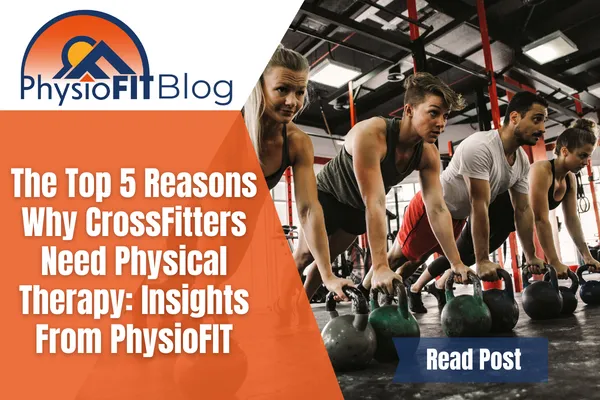
The Top 5 Reasons Why CrossFitters Need Physical Therapy: Insights From PhysioFIT
PhysioFIT's Perspective: The Essential Role of Physiotherapy for CrossFitters
Please Note: The information provided on our website is intended for general education and is not a substitute for professional medical advice. Each individual's situation and body are different. Therefore, what may work for one person may not work for another. We care about your well-being and advise you to reach out to us to discuss your specific needs before implementing any advice from our website.
Introduction
CrossFit is a high-intensity fitness regimen that has gained popularity worldwide. It incorporates elements from various disciplines, including weightlifting, gymnastics, strongman, and the list goes on. While it's an excellent way to build strength, endurance, and agility, the physical demands of CrossFit , like with any physical activity, can also lead to injuries if not properly managed. This is where physical therapy comes into play. At PhysioFIT, we believe in the importance of physical therapy care in maintaining fitness and preventing injuries, especially for CrossFitters.
The Physical Demands of CrossFit
CrossFit workouts, known as WODs (Workouts of the Day), often involve complex movements that require strength, flexibility, and coordination. These can include everything from Olympic lifts to high skill gymnastic movements. These workouts are intense and often time dosed inappropriately at your local box. According to a study published in the Orthopaedic Journal of Sports Medicine, nearly 20% of CrossFit participants reported experiencing an injury over a 12-month period. While this is often lower than many popular sports in the U.S it remains something we should be paying attention to.
The Role of Physical Therapy in CrossFit
Physical therapy can play a crucial role in helping CrossFitters optimize their performance and prevent any type of fitness or sports-related injuries. AtPhysioFIT, we take a proactive approach to physical therapy. Instead of waiting for an injury to occur, we work with athletes to strengthen their bodies, improve their mobility, and correct any imbalances or poor movement patterns that could lead to injury. This approach, often referred to as preventive physical therapy, can help CrossFitters stay healthy and perform at their best. We believe we are best positioned to help you because we are one of you! We intimately understand not just the intensity of the program but the culture, methodology, and movements involved.
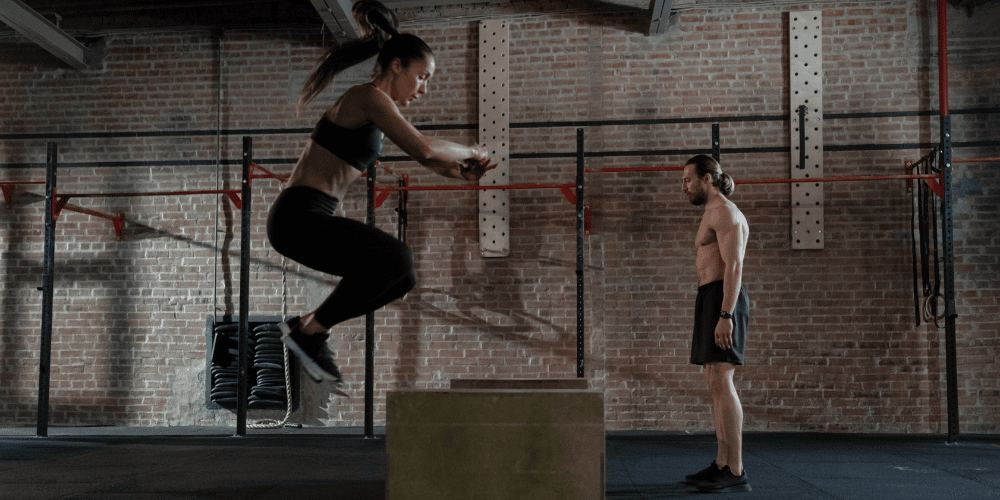
Why CrossFitters Shouldn’t Wait Until They Can’t Workout to See a Physical Therapist
Many athletes, including CrossFitters in Central Oregon, make the mistake of waiting until they're in pain or can't workout before seeking help. However, by the time pain sets in, an injury has often already occurred. Early intervention with physical therapy can help identify potential issues before they become serious problems. Remember, no movement done properly should induce joint pain regularly. If the front of your shoulder hurts every time you do toes to bar or the base of your neck is sore after handstand push ups this is your body telling you something is not moving the way it should. Just because it happens frequently doesn't mean it’s normal.
At PhysioFIT, we believe in catching and addressing these issues early. Our team of physical therapy specialists can assess your movement patterns, identify any areas of weakness or imbalance, and provide you with a personalized treatment plan to address these issues. This proactive approach can help you maintain your fitness, prevent injuries, and keep doing the workouts you love.
The Top 5 Reasons Why CrossFitters Need Physical Therapy in Bend Oregon
Reason 1: Injury Prevention
CrossFit is a high-intensity workout regimen that pushes your body to its limits. While this can lead to impressive fitness results, it can also increase the risk of injuries.
This is where physical therapy comes in. At PhysioFIT, our physical therapists can help CrossFitters understand their bodies better and prevent injuries. We do this by teaching proper form, identifying and addressing movement imbalances, and creating personalized training programs that consider each individual's unique physical capabilities and limitations.
Reason 2: Performance Optimization
Physical therapy isn't just about injury prevention and recovery. It's also about optimizing performance. At PhysioFIT, we understand that every CrossFitter has performance goals, whether it's lifting heavier weights, completing workouts faster, or simply being able to train consistently without pain.
Our physical therapists can help you reach these goals. We do this by enhancing movement efficiency, reducing energy waste, and improving strength and flexibility. With our help, you can push your limits in a safe and effective manner.
Reason 3: Mobility Improvement
Mobility, or the ability to move and control your joints through their full range of motion, is crucial in CrossFit. It allows you to perform exercises correctly, reduces the risk of injuries, and contributes to overall performance.
At PhysioFIT, we offer mobility training as part of our physical therapy services. We teach exercises that improve flexibility, balance, and body control, and we provide hands-on treatment to address any mobility issues you may have.
Reason 4: Recovery Acceleration
CrossFit workouts can be tough on your body. That's why recovery is an essential part of every CrossFitter's routine. Proper recovery reduces muscle soreness, prevents overuse injuries, and ensures that you're ready for your next workout. Remember, recovery is more than a cold plunge.
Physical therapy can speed up recovery. At PhysioFIT, we use techniques like massage, stretching, and targeted exercises to help your body recover from intense workouts. We can also provide limited advice on nutrition, sleep, and other lifestyle factors that affect recovery. In Crossfit, we find training load (often in the form of volume) is the biggest culprit for adverse events that keep you out of the gym. We are always happy to talk with you and help you nail down what training load is appropriate for you and help you increase that capacity (should that be your goal).
Reason 5: Technique Refinement
Proper technique is crucial in CrossFit. It ensures that you're getting the most out of each exercise and reduces the risk of injuries. However, with the wide variety of exercises in CrossFit, it can be challenging to master the technique for each one.
This is another area where our physical therapists can help. At PhysioFIT, our physical therapists are experts in movement analysis. We can observe how you perform different exercises, identify any issues with your technique, and provide feedback and instruction to help you improve. Again, we didn't just learn about these movements in books. We’ve spent years refining our own technique not only because we love it but because we believe to help you we need to truly understand the demands your body is under first hand.
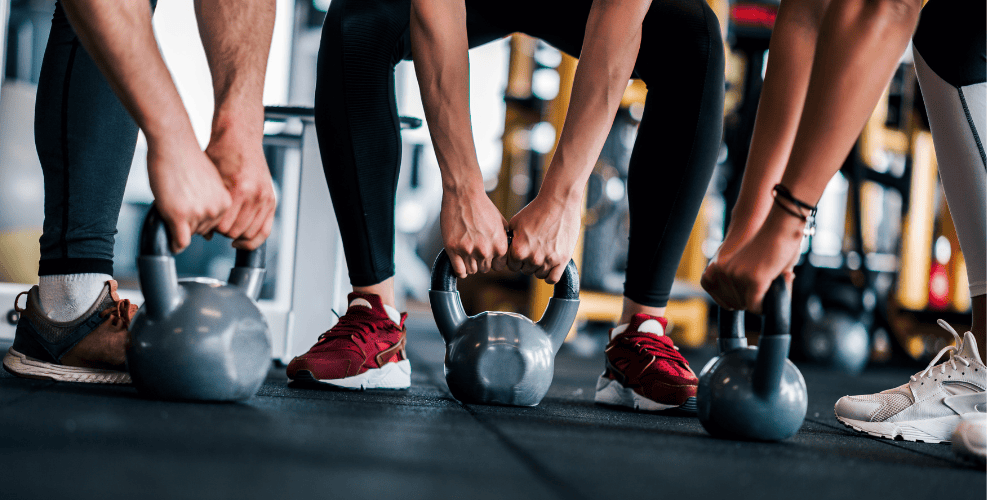
FAQs
What is CrossFit?
By definition CrossFit is high-intensity functional movements executed at high intensity. It mixes almost every training modality to help build the most resilient you possible. It aims to build a body that is prepared for anything life will throw at it.
What CrossFit isn't?
Crossfit is not inherently more risky than other forms of exercise or sport.
Crossfit is constantly varied… not random.
Why might CrossFitters need physical therapy?
CrossFitters may need physical therapy due to the high-intensity and often high volume training seen in many Crossfit boxes, which when not managed appropriately, can lead to injuries. Physical therapy can help in injury prevention, recovery, and improving performance.
What are some common injuries in CrossFit?
Injuries we tend to see in crossfitters are shoulder, knee, and lower back injuries.
What is PhysioFIT?
PhysioFIT is a physical therapy clinic that offers a range of services, including manual therapy, injury prevention, rehabilitation, and performance enhancement, tailored to the needs of each individual. Call and schedule an appointment with us today!
Conclusion
Physical therapy should play a crucial role in the world of CrossFit. It not only aids in the recovery from injuries but also helps in preventing them. By improving mobility, strength, and overall fitness, physical therapy can significantly enhance a CrossFitter's performance.
Moreover, with the high-intensity and high-volume nature of CrossFit, the risk of injury is always present. Therefore, incorporating physical therapy into a CrossFitter's routine is not just a smart choice, but should be a necessary one.
At PhysioFIT, we understand the unique needs and challenges of CrossFitters. Our team of experienced physical therapists is dedicated to helping you stay fit, healthy, and injury-free. So why wait? Make physical therapy a part of your fitness regimen today. Your body will thank you.
Please Note: It's important to note that any exercises that are shared should be performed under the guidance of a qualified physical therapist in bend to ensure correct technique and to prevent injuries. A physical therapist can provide a customized exercise program based on the individual's fitness level, goals, and any existing injuries or conditions. If you’d like to explore this more or would like to schedule a time with a physical therapist, contact us atPhysioFITBend.com
Copyright PhysioFIT 2025 . All rights reserved


